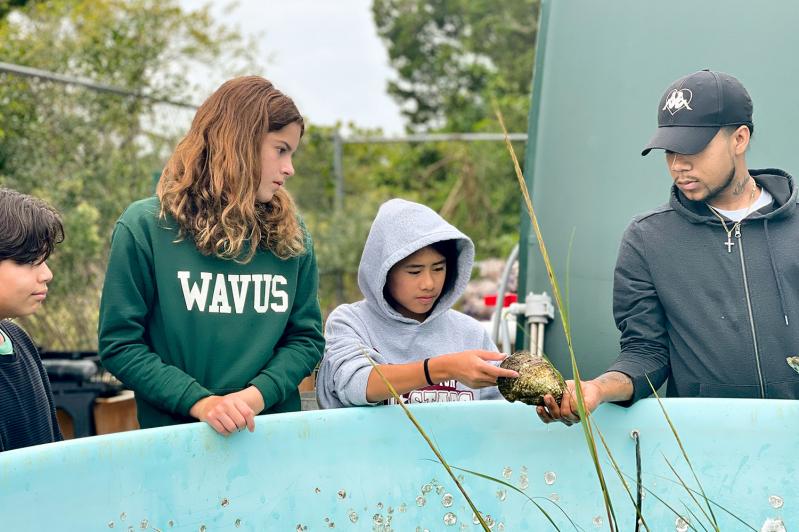The Hayground School’s senior learners spent the last two months as oyster-farming apprentices at the Shinnecock Tribal Hatchery, learning all facets of growing and caring for the bivalves that play a critical role in cleaning South Fork waters and feeding the local economy.
They even got to taste the fruits of their labor, learning how to shuck oysters, eat them raw, and fry them up for sandwiches — all adding up to a well-rounded aquaculture experience.
“They were the coolest kids,” said Mila McKey, a Shinnecock Nation tribal member who manages the hatchery and mentored the Hayground students three mornings a week since school started in September. “Their thirst for knowledge about what was actually happening, what an oyster does, how it lives and interacts with the environment, where they come from — everyone involved was invested in it.”
For Opi Lawless, the best part was clipping bags of oysters onto lines in the hatchery’s grow-out area. She said she was “surprised by the amount of cleaning we had to do. We were cleaning the tanks and oysters almost every day.”
A classmate, Amaree Charlton, had two “favorite parts”: discovering just how much water oysters are capable of filtering — 50 gallons per day for a mature specimen — and seeing the crabs and eels that coexist or compete with the bivalves under the water.
“I did feel like I was an actual oyster farmer helping clean the bay,” he said.
And C.J. Echevarria said she enjoyed eating them — “I really like seafood and I have a really strong ‘salt tooth,’ “ she explained — as well as checking the water temperatures, which were much higher than she anticipated. It led to thought-provoking questions about climate change.
Two other students, Cecily Boseley and Caroline Kelley, were fascinated not by the oysters but by the numerous green crabs they found. This species is considered invasive — but is also considered a culinary delicacy, in their soft-shell phase, in the northeastern United States and parts of Europe.
“They destroy eelgrass and they’re wrecking the marine environment,” said Cecily, “but people found out they are edible and taste really good in stock. We thought if they can do that in Maine, then we can do it here.”
“It all started when we wanted to bring a crab back as a pet to put in the tank,” Caroline said. It was her idea to go one step further by harvesting some of the green crabs to turn into soup stock and sell as a fund-raiser for the school.
The apprenticeship built upon last year’s lessons about oysters. The students conducted extensive research, studied the Billion Oyster Project in New York City, and produced several episodes of a podcast all about oysters.
Liz Bertsch, who teaches the mixed-age senior learners group, said the apprenticeship incorporated quite a few academic subjects, such as marine biology, environmental studies, history, and economics. Next up for the class is the completion of an in-depth research portfolio, with each student set to focus on one aspect of the oyster farming process or related ecological issue.
“I want to say how grateful we are to the Shinnecock tribe for allowing us to do this,” Ms. Bertsch said. “It was an incredible privilege.”

